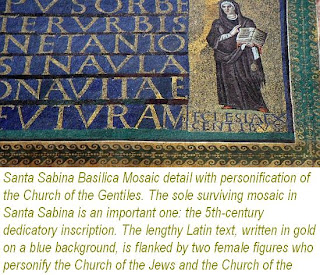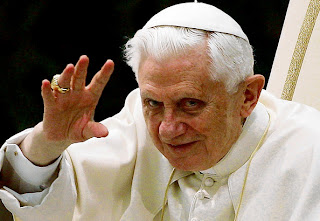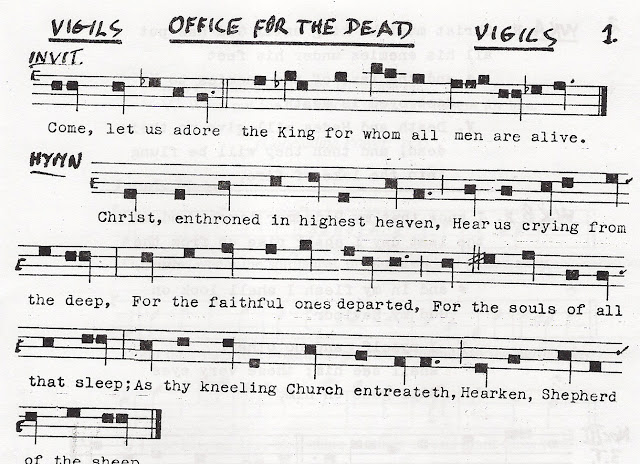Markan Interpretation
COMMENT at End
 |
Forth Bridges
"The Markan episode traditionally known as the transfiguration actually consists of three elements". (Interpenetration Sacra Pagina below) |
Mark 9:1 Bridge
A Commentator advises about taking a Verse of the Day in Bible and says it is a mistake not to read the paragraph and find the context.
The case of Mark 9:1 proves the exception.
It stands in a lonely obscurity. Mk. 9:1 is forgotten in the eminences of the Confession of Peter and the Transfiguration.
Mk. 9:1 is in a king of no-land or between two Chapters, Mk8 and Mk9.
The displacement is attributed to Jerome, (Vulgate), and also to Douai_Rheims and Ronald Knox
Mar 9:1
See Vulgate
(Vulgate) (8:39) et dicebat illis amen dico vobis quia sunt quidam de hic stantibus qui non gustabunt mortem donec videant regnum Dei veniens in virtute Douai-Rheims
(DRB) (8:39) And he said to them: Amen f say to you that there are some of them that stand here who shall not taste death till they see the kingdom of God coming in power.
Ronald Knox
(8:39) Believe me, there are those standing here who will not taste of death before they have seen the kingdom of God present in all its power.
The Mass Gospel passage for Fri 18th 2011 was Mark 8. 8:34-9:1.
It is an unusual split between two Chapters.
There can be very brief Gospel passage for Mass.
One can suggest that Mark 9:1 can merit this one verse to serve as one Mass message.
Mark 9:1 (or Vulgate 8:39) is Bridge, even a three arch bridge, spanning the major link more well named sites of ‘the Confession of Peter’ and ‘the Transfiguration’.
The commentary of Sacra Pagina (pp.267-275) finds a very useful metaphor of the Bridge and it’s spans..
NOTES
1. And he said to them: Mark often uses this expression to make connections (SV(' 2:27; 4:11,21,24; 6:10; 7:9; 8:21), especially when, as here, the connection is not immediately obvious. The verse serves as a bridge between 8:34-38 and 9:2-8. Amen I say to you: Whereas" Amen" often concludes prayers or statements, the use of "Amen" to introduce a statement is unusual and is often regarded as a speech-characteristic of the historical Jesus. Used already in 3:28 and 8:12, it becomes increasingly frequent in the second half of Mark's Gospel (see 9:41; 10:15,29; 11:23; 12:43; 13:30; 14:9, 18, 25, 30).
2. some people standing here: The Greek perfect participle hesukoum seems to carry a present sense here. In this context it refers most obviously to Peter, James, and John (9:2), though it could refer to the larger group of 8:34.
experience death: The verb geuesihai ("taste") is used metaphorically with regard to death also in J01m 8:52 and Heb 2:9.
the kingdom of God come: For the kingdom of God as the central theme of Jesus' preaching see Mark 1:15. The major interpretive problem here is posed by the perfect participle eielythuian. Should it be taken as present in sense ("come") as seems to be the case with hestekotim ("standing") earlier in the verse? Then the kingdom is still future (though imminent). Or should it be taken as a true perfect ("has come")? Then the kingdom has already come (realized eschatology), and the task of "some standing here" is to recognize its presence. The former explanation better suits Mark's eschatology as expressed in 1:15.
with power: The term dynamis is used by Mark with reference to Jesus' miracles (6:2,5,14; 9:39), to God (12:24; 14:62), and to the heavenly "powers" and to the coming of the Son of Man (13:25-26). Its appearance here (en dynamei) conributes to the eschatological mood of the episode that follows.
2.after six days: This precise time reference is puzzling. To what does it refer? It is explained in several ways: as part of a pre-Markan source that the evangelist carelessly took over, as an allusion to the theophany that Moses experienced after six days on Mount Sinai according to Exod 24:15-17, as pointing back to Peter's confession in 8:29, or as pointing forward to Jesus' "Passion week" in Jerusalem.
INTERPRETATION
The Markan episode traditionally known as the transfiguration actually consists of three elements: the saying about the imminent coming of God's kingdom (9:1), the narrative about the transformation or transfiguration of Jesus (9:2-8), and the discussion between Jesus and his disciples about Jesus as the suffering Son of Man and John the Baptist as an Elijah figure (9:9-13). While different in literary form and content, in their present place in Mark's Gospel they confront Jesus' disciples and Mark's readers with the mystery of the kingdom of God and the place of Jesus' suffering, death, and resurrection within it. Mark may well have been the one who was responsible .for putting the three units together. Their combination evokes themes that are central to his gospel.
The saying about the imminent coming of God's kingdom (9:1) promises that some contemporaries of Jesus would see "the kingdom of God come with power" before they die. This saying, along with Mark 13:30 (see Matt 24:34; Luke 21:32) and Matt 10:23, provides the strongest evidence that Jesus regarded the kingdom of God as future and imminent (that is, 10 come soon). These sayings are balanced off by Luke 11:20 (see Matt 12:28); Matt 11:12 (see Luke 16:16); and Luke 17:21, which imply that God's kingdom is already present or at least inaugurated in Jesus' ministry. When the two sets of sayings are put together, the result is the "already / not yet" dynamic that is typical of NT eschatology.
The kingdom saying in Mark 9:1 is taken by most commentators as part of the preceding unit with 8:34-38. In fact it serves as a bridge from the final (eschatological) saying on discipleship in 8:38 to the story of the transfiguration in 9:2-8. By placing it just before the transfiguration Mark has given an interpretation to both the saying and the narrative. On the one hand Mark's readers are led to suppose that those "standing here" are Peter, James, and John, and that the transfiguration itself represents a (if not the) coming of God's kingdom in power. On the other hand the readers are provided with a clue toward understanding Jesus' transfiguration as a preview or anticipation of the fullness of the kingdom of God and of the risen Jesus' place within it.
The narrative about the transformation or transfiguration of Jesus (9:2- 8) describes the setting and the brilliant figure of Jesus (9:2-3), the appearance of Moses and Elijah as well as Peter's suggestion (9:4-6), the cloud and the voice coming from it (9:7), and the abrupt ending of the event (9:8). The major interpretive question regarding Mark 9:2-8 is, What is its literary genre? The three most prominent explanations are these: historical report, resurrection appearance, and apocalyptic vision. While no one of these interpretations is entirely convincing, each contains some important truth.
Those who regard the transfiguration as a historical report cover a wide spectrum of opinions. They range from those who want to take every element as literal fact to those who say that some irrecoverable experience of the "brilliance" of Jesus on the part of his disciples led to the imaginative representation that now stands in the NT. The story certainly has many "supernatural" features that are beyond the capacity of the historian: the symbolism of the high mountain, the transfiguration itself, the appearance of Moses and Elijah, and the heavenly voice. That it reflects the disciples' experience of Jesus' brilliance is entirely likely. But the precise details of that experience are hard to determine.
Some interpreters suggest that the transfiguration story was originally an account of an appearance of the risen Christ that has been read back into the career of the earthly Jesus. It fits well with the NT descriptions of other appearances of the risen Christ (e.g., Acts 9:3; 22:6; 26:13). The hypothesis is initially attractive (because it gives a context to the changed appearance of Jesus and to the disciples' amazement) and not implausible through a better case can be made for Mall 16:17-19 (or even Luke 5:1 II) as originally a post-Easter story. But some key elements found in the NT appearance stories, especially the theme of mission, arc missing. At any r.itc, the transfiguration is at least a preview of the glory of the risen Jesus .md so is an anticipation of the resurrection.
Still others regard the transfiguration as an apocalyptic vision such as one finds in Daniel and other Jewish apocalypses (1 Enoch, 4 Ezra, 2 Baruch, pie.). Indeed, Matt 17:9 explicitly describes the experience as a "vision" (horama), This suggestion helps to explain the supernatural elements as well as the eschatological context of the story. But there is no first-person narrative ("I saw") or an angelic interpreter and a detailed interpretation of the vision. However, it is fair to say that the transfiguration does provide a preview of Jesus as a major character in the coming of God's kingdom in its fullness.
No one of these literary genres-historical report, resurrection appear once, apocalyptic vision-fully explains the transfiguration of Jesus, but each of them does explain something. A more helpful approach to the text is to say that it is a "christophany," that is, a manifestation or revelation of who Jesus Christ really is. The term is a variation of the word "theophany," a scene in which God reveals God's own self to humans (see, for example, the encounter between God and Moses in Exodus 3). In the transfiguration Jesus Christ is revealed as a glorious figure, someone on a level with (and even superior to) Moses and Elijah, and is called "Son of God" by a heavenly voice. In the Markan context of the journey narrative the transfiguration gives a glimpse of Jesus' true identity and the glorious goal to which his journey will lead. Meanwhile the disciples are understandably puzzled and react with a mixture of awe and foolishness.
If one can speak of an OT model for the transfiguration story the best candidates are the descriptions of Moses on Mount Sinai in Exodus 24 and 34. There are many common features: the high mountain (Mark 9:2 and Exod 24:12,15-18; 34:3), the presence of a special group (Mark 9:2 and Exod 24:1-2, 16), radiance from the central figure (Mark 9:6 and Exod 34:29-30,35), fear among the onlookers (Mark 9:6 and Exod 34:29-30), the loud (Mark 9:7 and Exod 24:15-18; 34:5), and the voice from the cloud (Mark 9:7 and Exod 24:16). The common features are so numerous that it is hard to escape the impression that the transfiguration story presents Jesus as not only the Son of God but also a Moses figure.
The discussion between Jesus and his disciples (9:9-13) relates Jesus' identity to the mystery of the cross and to Elijah/John the Baptist. When Jesus echoes the Passion prediction of 8:31 in 9:9 the disciples wonder how the Son of Man (whose glory they have experienced) could be put to death so as to rise from the dead. They also wonder about the sequence of eschatological events. For them resurrection is an end-time event, and Elijah must come before this can happen. This was only one of the several eschatological scenarios current among Jews in Jesus' time, but it was a common one (see 4 Ezra and 2 Baruch). But rather than rejecting their scenario, Jesus uses it to link John the Baptist to the prophet Elijah-a link already suggested by the inclusion of Mal 3:1 in the OT quotation in 1:2-3, by John's Elijah-like prophetic lifestyle (1:6), and by his fearlessness in speaking out against rulers in Israel (6:14-29). However, some people were apparently identifying Jesus with Elijah (see 6:15; 8:28), and only in 9:11-13 does it become completely clear that it is John rather than Jesus who is the Elijah figure. At Jesus' death on the cross some of the bystanders imagine that he is calling on Elijah (see 15:35-36). Nevertheless, while establishing that John the Baptist is Elijah in the eschatological scenario, Mark 9:11-13 serves to link John and Jesus, especially with regard to their sufferings, to the full coming of God's kingdom.
While each of the three sections in 9:1-13 can be taken separately, it is pastorally useful to follow Mark's insights in letting them interpret one another. What emerges from the combination is a deeper appreciation of Jesus' death and resurrection as pivotal events in the coming of God's kingdom in its fullness, the overwhelming brilliance of the person of the "real" Jesus, and the persistent presence of the mystery of the cross. The call to "listen to him" (9:7) highlights the proper response to Jesus and his place in the paschal mystery. It may point backward in particular to the teaching on the cost of discipleship in 8:34-38. The lectionary practice of reading the transfiguration story on the second Sunday of Lent captures the Markan dynamic nicely.
+ + +
COMMENT
Mk 9:1 the tower of the Three Span Bridge
----- Forwarded Message ----
From: WILLIAM ...
To: Donald ...
Sent: Sun, 20 February, 2011 14:08:38
Subject: Re: Mk 9:1 the tower of the Three Span BridgeDear Father Donald,
What an amazing conundrum, thank you! Nothing as clear or as measured as the Forth Bridge in your fabulous photo ... and with subtle complication when taken in harmony with the other Synoptics:
Mark 9:1 And he said to them, "Truly I tell you, there are some standing here who will not taste death until they see that the kingdom of God has come withpower."
Matthew 16:28 Truly I tell you, there are some standing here who will not taste death before they see the Son of Man coming in his kingdom."
Luke 9:27 But truly I tell you, there are some standing here who will not taste death before they see the kingdom of God."
The verse is undoubtably a 'link' between the two chapters, but so brief, we almost don't notice it! We admire the spans of the bridge but give ony little thought to the tower on which they stand.
The Mark Sacra Pagina commentary which you present stands out for me as the most perceptive.
The Luke Sacra Pagina commentary on Luke 9:27 has reference to the 'spans', and then an awareness of the 'tower':
“Notice that Luke omits “coming in power” from Mark and the specific connection to the parousia in Matthew. “This section falls into three scenes: Peter’s confession of Jesus as the Messiah with the first prediction of the passion (9:18-22); sayings on the cost of discipleship (9:23-27); and the transfiguration (9:28-36). Taken together, they lead the disciples (and reader) into a deeper understanding of Jesus’ identity and their call.”… [And interestingly]... “by twice using the term "glory" in the story, Luke deliberately makes his version of the transfiguration the direct and immediate fulfilment of Jesus’ prediction that the Son of Man would come in ‘his glory’. The notions of ‘glory’ and ‘kingdom of God’ are closely tied by Luke to the person and words of Jesus.”
I tried other commentaries, and found this brilliant awareness of the 'tower' on which the span of the stories are built:
Jerome
Mark 9:1 “The most obvious meaning of Jesus’ promise is that it refers to the full flowering of God’s kingdom at the end of human history. The kingdom will come before some of the bystanders die. In the present context the saying may refer to the anticipation of the kingdom in Jesus’ death and resurrection, the judgement, or the transfiguration. The most convincing explanation is that Mark presents the transfiguration as a preview or anticipation of the final coming of God’s kingdom, and thus as a commentary on 9:1 itself.”
- - - - - - - - - - - - - - -
I tried Catena Aurea Mark 9 [http://www.catecheticsonline.com]:
ORIGEN; As much as to say; The Son of Man is now come, but not in glory; for He ought not to have been ordained in His glory to bear our sins; but then He shall come in His glory, when He shall first have made ready His disciples, being made as they are, that He might make them as He is Himself, in the likeness of His glory.
JEROME; The death He speaks of as to be now, but the promise of His coming in glory is put off to a long distant time. He that knows secret things therefore requites a present fear with a present reward, saying, I say to you, There be some of those standing here that shall not taste death until the Son of Man come in His is kingdom.
and very simply:-
REMIG; What is here said, therefore, was fulfilled in the three disciples to whom the Lord, when transfigured in the mount, showed the joys of the eternal inheritance; these saw Him coming in His kingdom that is, shining in His effulgent radiance, in which, after the judgment passed, He shall be beheld by all the saints.
- - - - - - - - - - - - - - -
That was truly a challenge! I now see just how the tower of Mark 9:1 supports the spans magnificently!
Thank you for sharing this with me, I have had a wonderful excursion over the bridge of the Firth of Thought...
Yours in Our Lord,
William





